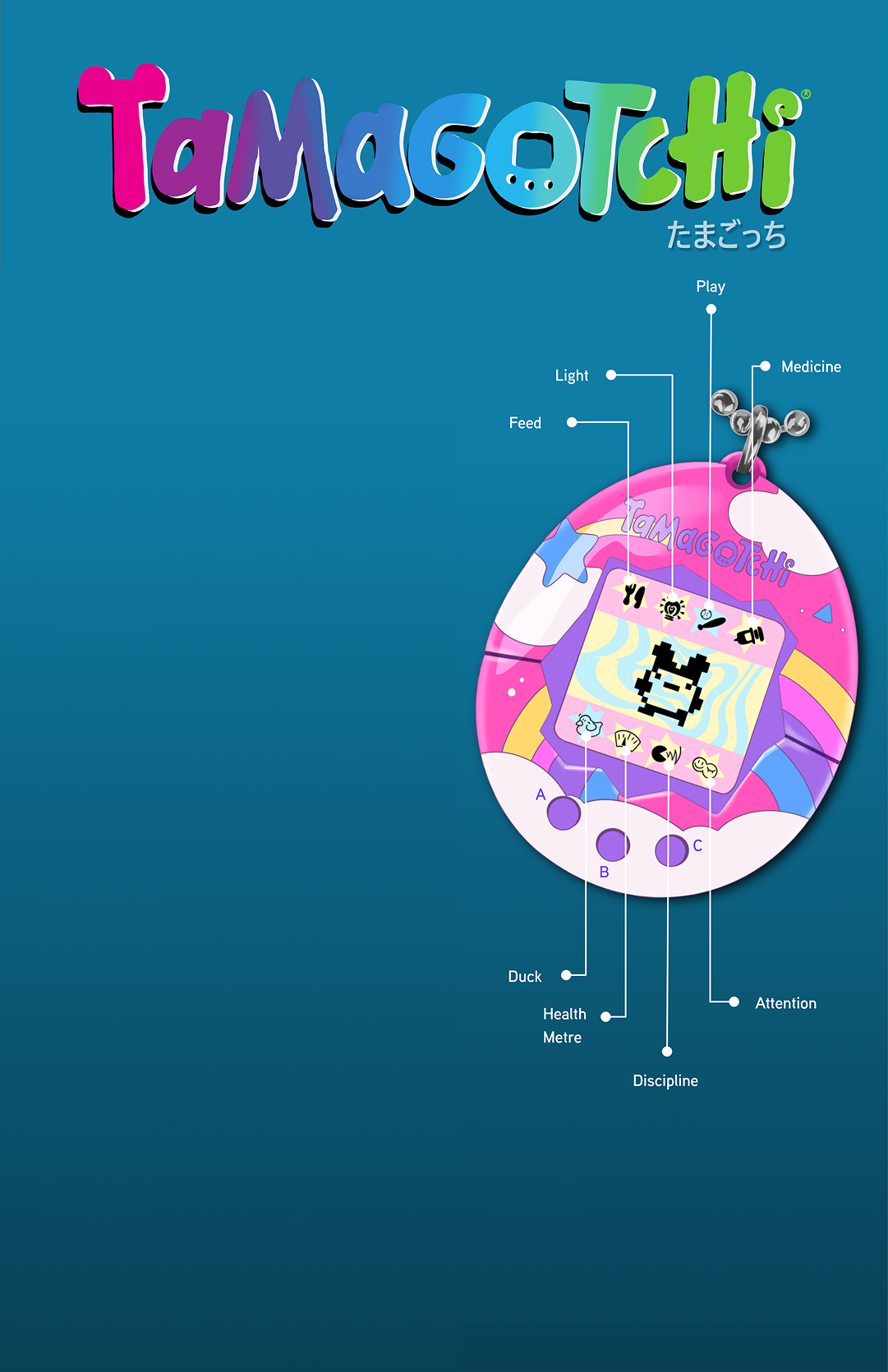
Tamagotchi
A How To Guide
IxD Visualizing Information Visualize an Object (Fundamentals of Working with Data)
Project Outline
This was an Information Design Project where we had to explain how to use an object in 5 steps or less. While I have experimented with information design, this was my first large scale project. I was able to incorporate my hobby for video games, and explore the history of a Tamagotchi. My project was designed to appeal to a diverse audience, comprising both young adults and children. It is key to this project that the creation of instructions are intentionally user-friendly, breaking down complex tasks into easily digestible steps that provide an easy understanding of the buttons and steps required for operation. My aim was to ensure that this design could effectively reach two distinct groups: individuals who hold nostalgic memories of the toy fad during its 1990’s-2000’s peak - and those who are completely new to the experience .One of the primary objectives I set out to achieve with this project was to experiment with the incorporation of a childlike element, in this case, a toy, while presenting it in a manner that shows professionalism through the medium of an infographic. My goal was to create content that could be understood effortlessly by users of any age, eliminating any barriers to comprehension.
Finding Beauty in the Ugly
When I initially began researching the history of Tamagotchi, I went in with limited prior knowledge. My understanding was quite vague, and I was unaware of the extent of their existence or the origins that influenced them.
They rapidly gained immense popularity, becoming a major toy craze during the late 1990s and early 2000s.The term "Tamagotchi" is a combination of two Japanese words: "tamago" (たまご),meaning "egg," and "uotchi" (ウオッチ), which is derived from "watch." This is reflective of the distinctive size and shape of the toy, which closely resembles an egg.
The original product design was closely associated with a Japanese artistic style known as "Heta-Uma"(ヘタウマor ヘタうま), characterized as "bad but good." This underground manga style significantly influenced the creation of the iconic Tamagotchi characters and their marketing.
In contrast to the present day, modern Tamagotchis exhibit a much more adorable and gentle appearance, often tied with colours and intricate patterns.







